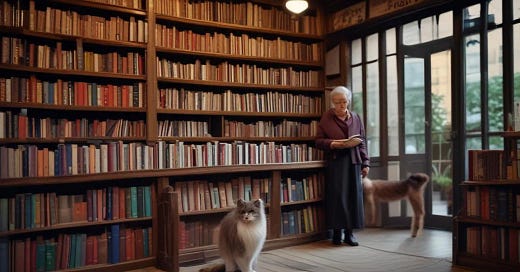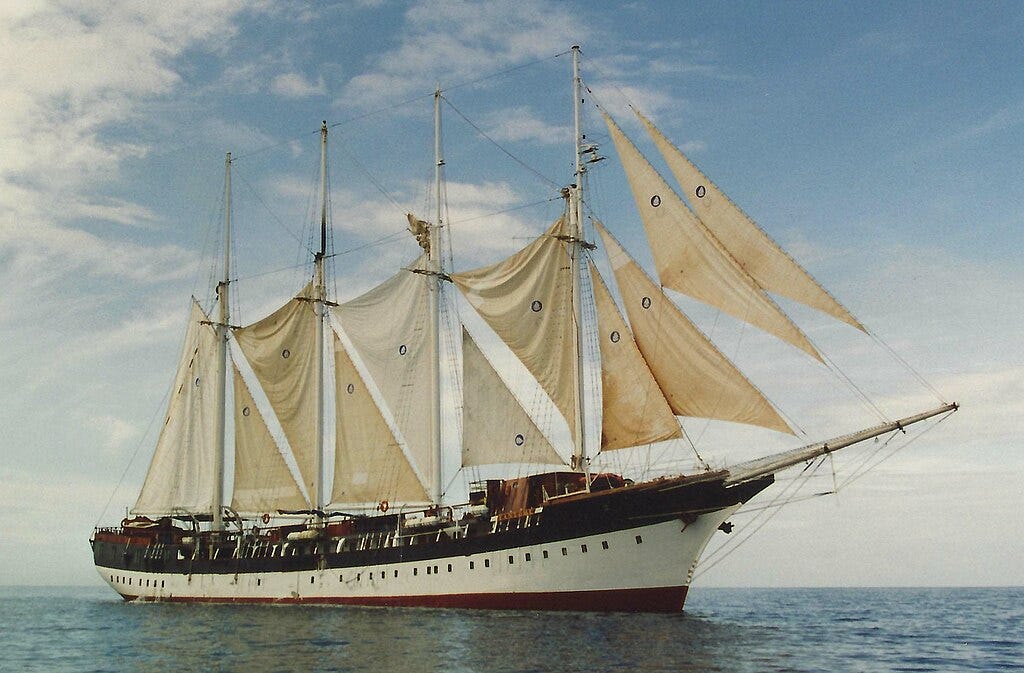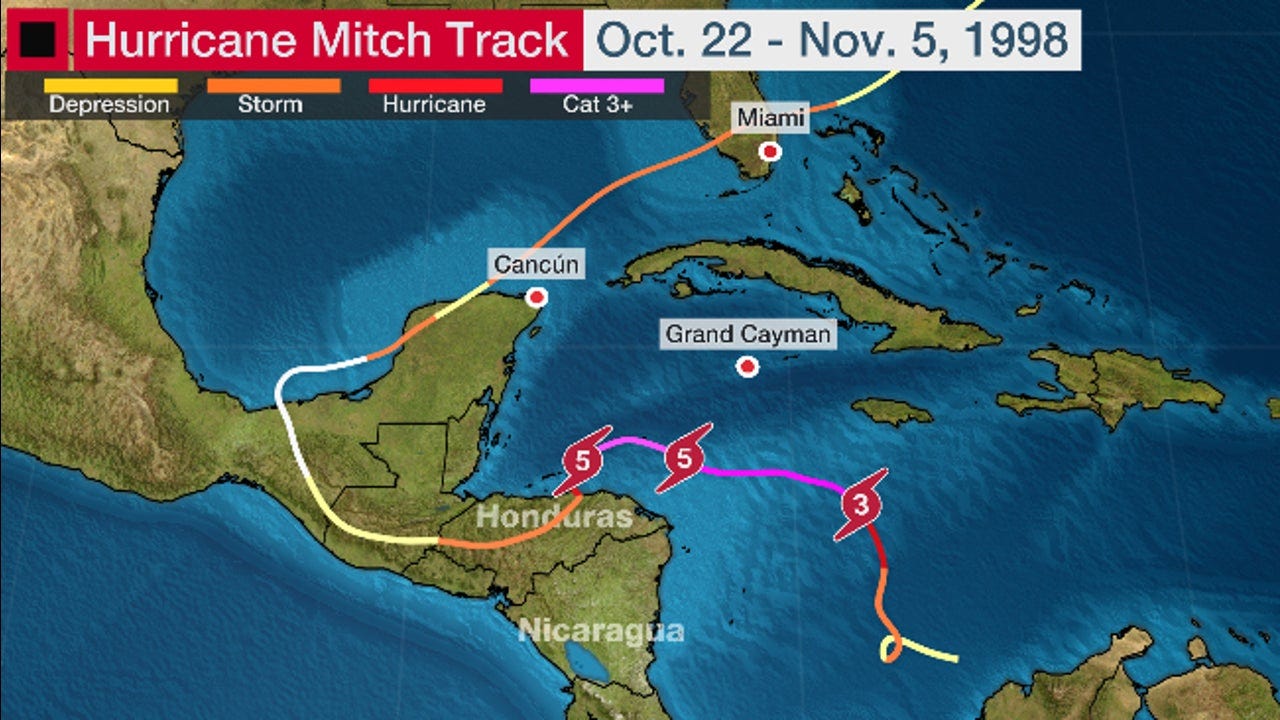Tales from the Yucatán
Chapter 17: We find inspiration in a vintage bookstore on the California Coast
Hola Amigos! Mexico Soul presents a condensed version of Where the Sky is Born, my memoir on building a house and opening a bookstore. Today’s chapter takes you into a California bookstore that set us on the path to starting our own in Mexico along with a couple Yucatán tales we learned along the way.
During 1991 Paul and I lived between two worlds, the world we knew well—corporate San Francisco, and the Yucatán, a mysterious place with a people called Maya in a jungle land bordered by a turquoise sea.
No doubt about it, we much preferred the latter for it represented freedom and a new life unfettered by stress and the pressures of our daily world. I believe if anyone is plotting out this type of endeavor, be it retirement or an extended adventure vacation, the most treasured time is in the planning and preparation. As the adage goes, “It’s the journey, not the destination.”
One weekend on a drive down the coast to Monterey we stopped at Moss Landing, known only for its working boat harbor and a handful of antique shops. Tucked away next to a railroad caboose turned antique shop we found a used bookstore, Yesterday’s Books. Intrigued, we peeked inside.
From behind an old-fashioned cash register a pencil-thin woman smiled at us. Apparently the owner, she lowered her no-frills glasses as we crossed the threshold, giving us a closer look. We passed inspection and she replaced the lenses firmly on her narrow nose, returning her absorption to a sheaf of papers in front of her.
The floor boards creaked, weary with age. A gray Persian cat stretched, moved towards us from its resting spot on a well-worn rug, and brushed my leg. I stared idly at the rough, clapboard walls and the unvarnished shelves holding up countless books. Her storefront had originally been a fish processing plant, detailing all aspects of production for canning sardines. Now it teemed with books, crammed in as tightly as its former residents.
I slowly made my way to a rear corner of the shop where a faded sign marked “Mexico and Central America” hung crookedly over several shelves bulging with dusty travel books. Paul moved along to the nautical and boating section, a long-time passion, having owned a sailboat years earlier.
I kneeled down, ready to rummage. A few of the more bizarre titles, like I Married Adventure done up in a zebra-patterned hardcover jumped out at me. Then in my organized shuffling I happened onto The Lost World of Quintana Roo. 1I turned to the inside dust flap and fell under the spell of a world gone by.
“This is the true story of a remarkable adventure,” it began. “Michel Peissel, a young Frenchman with an international background, was stranded on the coast of Quintana Roo in the eastern Yucatán, abandoned by boatmen he had engaged to take him southward.”
Peisel’s tale was over the top. He walked on foot from where Puerto Morelos would eventually be located to Belize in 1958 after being abandoned by Maya boatmen mere hours after a harrowing crossing from Cozumel. At 22 he was just inexperienced enough to start on foot, wearing sandals for a two hundred mile journey through jungles and mangrove swamps. His boots had been forgotten on the boat.
To exit the jungle he needed to travel from homestead to homestead, relying on the assistance of the local Maya for food and direction. (Next week’s post features a full account of The Lost World of Quintana Roo).
A voice behind me asked, “What did you find in the Mexico section?”
I turned around and faced the owner. The Persian cat purred contentedly, cradled in the nook of her arm. She peered down at the books I’d scattered onto the bleached floor boards.

I held up the faded volume. “The Lost World of Quintana Roo. Sounds like quite an epic.”
“Oh, yes. That’s a treasure all right. Intrepid—that’s the only word for that young man! Walking on foot through Mexican jungles. My word.”
“I guess you’ve read it,” I said, a little surprised she was familiar with the book.
“Oh dear, of course. Mexico, the Aztec and the Maya . . . my special interest areas. When I was young my parents took me on a trip to Mexico. We visited the pyramids at Teotihuacan north of Mexico City. I saw the Pyramid of the Sun and the Pyramid of the Moon. Made quite an impression. I’ve studied the Aztec and Maya my entire life. I read anything I can find on those subjects along with archeology, and when I’m finished reading, I put it here,” she said, pointing at the overstuffed shelves.
“We’re building a house in the Yucatán and now I’m fascinated by the Maya. Looks like I’ve come to the right spot.”
“For background you should read The Plumed Serpent by D.H. Lawrence,” she advised. “I’d also suggest The Power and the Glory by Graham Greene. My name is Mildred, by the way. Goodness, what an adventure, building a house in Mexico.”
“It has become one, that’s for sure. I’m Jeanine and that’s Paul over there in your nautical section. What a great bookstore. How long have you had it?”
“Oh dear,” Mildred sighed. I guessed she was trying to recall dates and times. Apparently years had slipped by while she hunkered down in this time warp of a bookstore, seemingly unaware another world existed. She was cozy and warm in a shop on the Monterey Coast with her cat, her wood stove and words from countless authors in thousands of books to keep her company.
“Let me see. I guess I’ve had the store 16 years. I bought it with my pension money right after I retired. I was a high school librarian and guess it kind of slipped over into my life, didn’t it?” she said as if she just became aware of it.
“It’s a great store. I have dreams of opening a bookstore in Mexico. How did you get started?” I said as I followed her back to the front counter.
“Well, I was lucky. I found an estate sale where I bought my first eight thousand books. Then I started going to garage sales.”
She paused and picked up the copy of The Lost World of Quintana Roo I was buying. Her focus shifted and she grabbed a pair of scissors to make a quick repair to the spine. In minutes it was flawless.
“Let me know how you like this book, and The Plumed Serpent. I’ll jot down a few other titles on the Maya, too.”
Paul called from the nautical section, “Jeanine, you have to see this ship. I think it docked at Puerto Morelos.”
“I’ll be right back,” I told Mildred.
I made my way to the nautical section where Paul had found an oversized title, Sailing Ships of the 20th Century. The book lay open to a photo of the Fantome, a grand four-masted schooner.
“Listen to this,” Paul said. “It says it was built by a duke in 1926 and later bought by Aristotle Onassis as a wedding gift for Princess Grace. But the princess never invited him to the wedding so she never got the boat.”
Indeed, the Fantome had sailed right into Puerto Morelos as part of the Windjammer Barefoot Cruise Sailing Line. We were as shocked to see a ship of such magnitude in our port as were our neighbors.
Gazing at the book I said, “The Windjammer Cruise ship. What a beauty.”
Years later, this ship would come to an unseemly end. Caught in the throes of Hurricane Mitch, an unpredictable class five hurricane, the four-masted, 282-foot ship had been boxed in by the storm. After Mitch gained strength becoming a major hurricane, 32-year old Guyan March, British Captain of the Fantome, was told by Windjammer President Michael Burke, Miami, to drop off paying passengers in Belize.
The self-insured steel hull vessel had been refurbished in 1969 for an excessive amount, according to a 1998 Miami Herald 2 article. Captain March and 30 crew members were instructed to try and outrun the storm, heading at first northwards towards Cancun and the safety of the Gulf of Mexico. But as the ship set sail, it became apparent that the hurricane had shifted direction, so the captain turned southwards, towards Honduras.
Mitch was now blowing at 180 miles an hour and gaining strength. Just as March headed north, the National Hurricane Center predicted Cancun would take the brunt of Mitch as the storm turned northwest towards the Yucatán Peninsula. To complicate matters, forecasters were having trouble predicting Mitch’s path as the atmospheric currents were weak. Historically, hurricanes at that time of the season, late October, drifted north-northwest.
Then Mitch stopped—stalled out over one location, never losing velocity. By this time Captain March was left with two choices—either run south or east. He headed south towards the lee side of the island Roatan just off the Honduras coast. Now his only choice was to again head north or due east.
March was being walled in by the storm. He chose east, hoping to slip into a safety slot as the eye passed above. When ship owner Burke last spoke to March, the Fantome was east of Roatan, 40 miles south of Mitch’s eye wall. The captain told Burke he was battling 100 mile-per-hour gale force winds and 40-foot waves and he said Mitch was taking dead aim at him. Then all communication was lost.
Three days later, on Halloween, the still missing ship was nicknamed the Ghost Ship. On November 2, Mexico’s Day of the Dead, after an intense three day search eight life vests and a life raft stenciled with SV/Fantome were found floating off the Honduran coast. Some speculated the steel hull ship may have pitch-poled, a stern to bow flip, with mast poles literally pitching forward and the bottom of the ship turning upside down which can happen when a ship encounters 50-foot waves dead on. The true account lies buried beneath the waves.
Mitch killed 10,000 people in Honduras and became the fifth most powerful Atlantic hurricane on record. In 1998 Cancun was saved, Honduras was sacrificed, along with the Fantome.
But that day in Moss Landing, years earlier, we had no clue what fate had in store for the elegant four-masted schooner. What we did know was that Mildred’s bookstore held certain fascination for both of us.
I handed the book back to Paul and returned to the counter to collect my purchases.
“The next time you’re in Moss Landing, drop in and we can chat about Mexico,” Mildred said, pushing a slip of ivory paper my way. “I think you’ll find these titles interesting. They’re a bit more scholarly.”
“Thank you, Mildred,” I said, clutching my new reading list. “The Caste War of Yucatán, by Nelson Reed, and Maya Cosmos, by Linda Schele and David Freidel. I can’t wait to read them.”
Thus began my search for literature on the Maya. Mildred continued to be a great source for us until we left for Mexico a couple years later. On rainy weekends we’d drive down the coast to Moss Landing to chat with Mildred about Mexico, the Maya, and her whimsical bookshop. These leisurely interludes were pleasant times and a welcome diversion as we labored our way through the dregs of our work-a-day world in San Francisco, awaiting clemency.
Cynthia Corzo, Cutis Morgan. “A Cornered Ship, 31 Men and a Date with Doom.” (The Miami Herald, November 8, 1998).
Michel Peissell. The Lost World of Quintana Roo. (EP Dutton, 1963).
If you’re interested in supporting independent journalism and writing, please consider a paid subscription to Mexico Soul. This is a free newsletter. I don’t paywall any of my posts, but you can choose to pay if you like what I deliver. It would mean the world to me and will keep you up to date on my posts and chapters from Where the Sky is Born, detailing how we bought land and built a house in a small fishing village on the Mexico Caribbean coast. Not to mention a bookstore, too! All for $5/monthly or $50 per year.
If you hit the heart at the top of this email, you’ll make it easier for others to find this publication and make me very happy.
Backstory—Puerto Morelos sits within 100 miles of four major pyramid sites: Chichen Itza, Coba, Tulum and Ek Balam. By living in close proximity to this Maya wonderland we pyramid hopped on our days off from Alma Libre Libros, the bookstore we founded in 1997. Owning a bookstore made it easy to order every possible book I could find on the Maya and their culture, the pyramids, the archeologists who dug at these sites and the scholars who wrote about them, not to mention meeting archeologists, tour guides, and local Maya who popped into the store. I became a self-taught Mayaphile and eventually website publishers, Mexican newspapers and magazines, even guidebooks asked me to write for them about the Maya and Mexico. I’ll never stop being enthralled by the culture and history and glad there’s always new news emerging for me to report on right here in Mexico Soul. Please share this post if you know others interested in the Maya. Gracias!








Love this story featuring Mildred and her Moss Landing bookstore, and love it that while reading it, I felt as if I were transported there, could just picture the setting and sequences you described. What a delightful lady who became an important part of your Mexico adventure. Thanks to you (and Mildred), I recently read The Lost World of Quintana Roo, and it was indeed fascinating. The telling of the Fantome's tragic fate in a sort of before and after progression was somehow melancholy, and impacting, especially considering your experience with Hurricane Gilberto. Thanks for another great one Jeanine!
This is quite a surprise! Mildred was my great aunt and she would be honored to be remembered so fondly. I am going to look through our albums and find the best photo of my Aunt Mick in her bookshop for you to use.